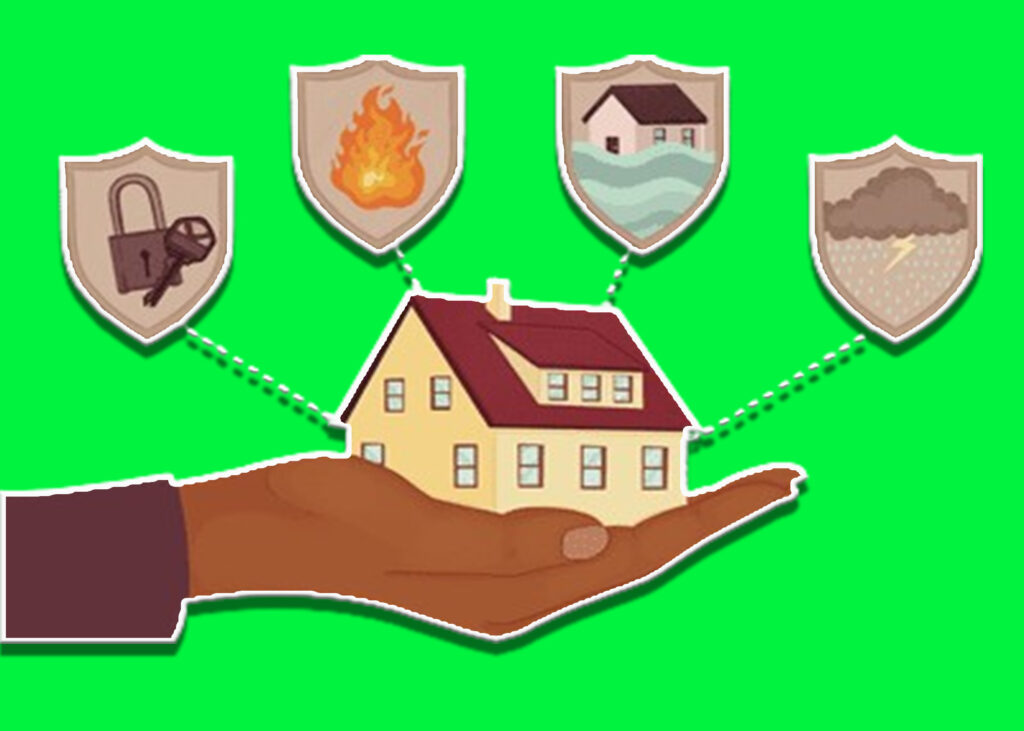Home insurance offers two types of coverage including named peril vs open peril coverage. Selecting the ideal home insurance policy requires striking a careful balance between cost-effectiveness and assurance of coverage in an emergency. These plans provide coverage against dangers that could cause loss or damage to your goods, such as your home or personal belongings.

The cost of various insurance policies varies. A threat listed under open dangers is covered unless it is expressly excluded from your policy. If you have named perils coverage, you are only insured from the risks specified in your policy.
What is Peril
The cause of a specific loss or harm is a peril in the insurance market. In this context, any number of risks or events that result in a claim could be considered a threat. The term danger is commonly used in insurance contracts to specify which risks are covered by a certain policy.
The following are examples of common risks covered by house insurance plans, but they are not the only ones:
- Fires.
- Lightning.
- Windstorms.
- Hail.
- Civil unrest or riots.
It should be remembered that not every risk is covered by a particular insurance policy. For example, even if an earthquake is by definition a risk, your home insurance policy could not cover it. In this case, homeowners would require specific earthquake insurance.
Open Peril vs Named Peril Coverage
Policies that provide insurance protect you against perils or events that result in or have the potential to result in losses. The kinds of events that each policy defines as hazards are different. Describe name-peril vs open-peril coverage. To make sure you are adequately insured, you should be aware of the following two types of homeowner policies:
Named Peril Coverage
An insurance policy that only covers the dangers expressly mentioned in your house insurance policy is known as a named peril policy. Listed-danger coverage could be a wise choice if you reside in a place where there is a low chance of natural catastrophes.
Because a named perils policy provides less coverage than an open perils policy, it will save you money on insurance rates. However, if something goes wrong and you are not insured, it may cost you more in the long run. Named-peril coverage is available on some home insurance plans. The following policies cover the structural risks of your house:
Basic form (HO-1)
This policy has the fewest specified hazards and is the most restricted. It provides coverage for certain risks to your house and possessions. These policies are more difficult to locate and less prevalent.
Broad form (HO-2)
This insurance provides less coverage than an open peril policy, but it covers more hazards overall. It offers named perils coverage for your house and personal belongings, just like HO-1 insurance does.
Modified coverage form (HO-8)
HO-8, the modified coverage form An HO-8 policy, like an HO-1 policy, provides basic coverage and is intended for senior house owners who might not be eligible for regular home insurance. It provides coverage for certain risks to the contents of your house.
Open Peril Coverage
All risks are covered under open peril insurance policies (also known as all-risk or all-peril policies), except those that are specifically excluded from coverage. Open-dangerous insurance is more extensive and typically has larger limitations than named-peril policies, but it is also frequently more expensive.
Furthermore, the insurance provider is responsible for demonstrating whether a certain risk is excluded under these plans. Exclusions vary between policies, but they often contain risks that must be covered separately or are not covered at all.
Open peril coverage is available for the following home insurance policies:
Special form (HO-3)
This is the most popular type of house insurance policy, the Special Form (HO-3). It provides named peril coverage for your personal belongings and open peril coverage for your house.
Comprehensive Form (HO-5)
The maximum degree of coverage is provided by the comprehensive form (HO-5), which includes open-hazards coverage for both your house and personal items.
Form HO-07 for mobile homes
This coverage provides named peril coverage for the contents of your house as well as open peril coverage for your mobile home.
The kind of insurance (open peril vs. named peril coverage) you should purchase depends in large part on the hazards that are most prevalent in your area and how comfortable you are with risk. In particular, you may learn about the most prevalent hazards associated with your property by speaking with a professional insurance agent. Finding out which coverage to get might also be aided by speaking with your neighbors.
What Policy (Open Peril vs Named Peril Coverage) Should I Get
The type of coverage you need will be determined by your circumstances, such as open peril vs named peril coverage. Individuals living in disaster-prone locations will require a different policy than those in low-risk areas.
Listing your valuables and identifying the most typical hazards in your home will help you decide what coverage to obtain. Furthermore, an insurance specialist can guide you through this process to ensure that you have the coverage that best matches your needs.

